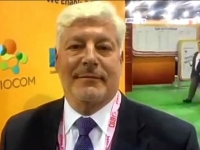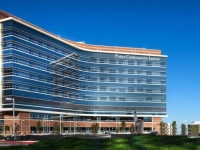Health
SAN DIEGO: WHERE STATE OF THE ART PATIENT CARE MEETS WORLD CLASS RESEARCH
RISE OF A GLOBAL HEALTHCARE EPICENTER

San Diego is establishing itself as the epicenter of global healthcare; many new and existing technologies including Personal Diagnostics, Sequencing, Clean Energy, Stem Cell Research, Wireless Health, Drugs & Therapeutics, Industrial Biotech (including Biofuels, Agriculture, Chemicals), Medical Device, Neuroscience and Biologics find a new stronghold in Southern California .
With Biocom at the helm, representing 770 companies, Southern California's life sciences cluster, is soaring with diverse, deep expertise and talents spread across all sectors. Its uniquely high concentration of research institutes makes it seem as though innovation is in the air. Its linkages to many key support industries make the life sciences a key economic driver where the Surf meets the Brains; in La Jolla, high on a hill overlooking the blue Pacific Ocean.
Biocom´s multitalented, innovative, visionary, President and CEO, Mr. Joe Panetta, has led and positioned the organization for global success since 1999. “Joe“ as he prefers to be called, has been responsible for leading Biocom´s efforts to establish Southern California´s life science community as second largest in the U.S.; leading programs in capital formation, public policy, workforce education, and member-to-member services. In addition to overseeing several subsidiaries of Biocom, including a purchasing group which provides more than $40 million in products and services to members, Joe is a co-founder of the Biocom Political Action Committee, the Bioom Institute for education and workforce development. He also serves as the Chairman of the California Biotechnology Foundation, a joint initiative to inform legislators and the media about the life science industry in the state.
Joe anchored Biocom in San Diego ensuring that this member driven organization is providing unmatched opportunities and resources to help life science companies and their employees fulfill their business goals and improve life through advancements in health, energy and agriculture. It offers member companies meaningful access to the influential drivers propelling the industry forward across all major life science sectors, including biotechnology, pharmaceutical, diagnostic, medical device, connected health, agriculture and bio-renewable energy., Safeguarding continuous success, Biocom provides a tremendous range of initiatives and programs in public policy, capital development, group savings, professional network building and talent development. It really does serve Southern California, a region offering the perfect climate for life science innovation because of its uniquely collaborative spirit, high concentration of world-class research institutions and its strong foundation for new company creation and development. The focus has remained constant: discover the next great thing and turn it into a reality. While capital sources, scientific insights and models inevitably evolve and cycle, California innovates, adapts and continuously refines business models. With the world´s experts in life science and technology, California targets development and commercial strategies that drive success.
Excellence in healthcare in research is translated into practice by San Diego´s premiere hospitals and healthcare providers. Most of them could compete on a global platform and place among the top 20. Founded in 1924 by philanthropist Ellen Browning Scripps, Scripps Health, under the leadership of the extraordinary Chris van Gorder and his excellent team, is a nonprofit integrated health system based in San Diego, Calif. Scripps treats more than 600,000 patients annually through the dedication of 2,600 affiliated physicians and more than 14,000 employees among its five acute-care hospital campuses, hospice and home health care services, 28 outpatient centers and clinics, and hundreds of physician offices throughout the region. "Chris", a former law enforcement officer, Scripps patient after a tragic accident joined Scripps' C-suite after working in many different positions and getting to know the organization intimately. Now, an accomplished author who only wears a tie for board meetings ( he prefers to fit in with his team), Chris has been instrumental in positioning Scripps among the nation´s foremost health care institutions. Now he is leading the restructure of the $2.6 billion, integrated health system to best prepare for the changes of health care reform.
Recognized as a leader in prevention, diagnosis and treatment, Scripps is also at the forefront of clinical research, genomic medicine and wireless health care. With three highly respected graduate medical education programs, Scripps is a longstanding member of the Association of American Medical Colleges. Scripps hospitals are consistently ranked by U.S. News & World Report among the nation´s best. For example physicians at Scripps Health are using a unique technology to deliver radiation treatments to breast cancer patients faster and more precisely than conventional methods by administering it to them in the operating room during surgery.
The new electron intraoperative radiation therapy (electron IORT) technology at Scripps uses a mobile linear accelerator to deliver electron beam radiation treatment into the patient´s open surgical site after the tumor is removed. Developed by IntraOp Medical Corporation, the IntraOp Mobetron® technology is housed on the campus of Scripps Memorial Hospital La Jolla. This is the only site in San Diego County to offer this highly advanced technology.
Scripps also offers advanced treatment technologies at the Scripps Proton Therapy Center, the Scripps Radiation Therapy Center and the San Diego Gamma Knife Center, and through its minimally invasive surgical program and CyberKnife stereotactic radiosurgery. Proton therapy is a form of external beam radiation that treats tumors with heavy charged particles, which can be placed precisely at the site of the tumor. Scripps Proton Therapy Center, which opened in February 2014, is the only center in the U.S. to exclusively offer the most precise proton delivery technology available, pencil-beam scanning Additional resources include specialized breast care centers and infusion clinics, nurse navigators, rehabilitation services, support groups and the Scripps Center for Integrative Medicine.
Of pediatric patients treated with proton therapy in 2013, 56 percent were younger than age 10 and 26 percent were enrolled on multi-institutional registry studies. The most common tumor diagnoses treated included ependymoma (brain), medulloblastoma (brain and spinal cord) and low-grade glioma (brain). “Children are particularly vulnerable to the late side effects of radiation exposure to normal tissue, including treatment-related chronic disease and secondary cancers,“ said Dr. Chang. “So we view this as a positive sign that more children are gaining access to this more precise form of radiation delivery.“
Not only can one find an incredible bio-corridor and a state of the art cancer treatment center facility in San Diego´s, it turns out San Diego has also a big heart. Yes, a top notch cardiac treatment center, Scripps Health´s new $456 million Prebys Cardiovascular Institute. which includes 108 private acute-care rooms and 59 intensive-care rooms, as well as two state-of-the-art hybrid surgical suites and as many as six catheter labs for interventional cardiology, diagnostic testing and digital imaging.
Although less than one year open, Prebys already made history by treating 44 year old, Swiss speed skiing legend Philippe May who was forced to withdraw from one of the world´s toughest endurance bicycle races, the Race Across America, because of a newly discovered and potentially deadly heart condition. May, who won the Pro World Championship in 2007 and in 2002 he was crowned the sport´s World Cup Champion by the International Ski Federation, is one of only five skiers to have exceeded 156 mph down the slopes. This June the world champion athlete has returned to San Diego to give the race a second try and to raise money for Scripps Health´s new Prebys Cardiovascular Institute. During the race he was wireless monitored by his physician, Dr. Rogers, who diagnosed him earlier with arrhythmogenic right ventricular dysplasia/cardiomyopathy. Also known as ARVD/C, the condition is present at birth and can progressively replace heart muscle in the right ventricle with fat and excess fibrous tissue, causing abnormal heart rhythms. Estimated to affect one in 5,000 people, the disease accounts for up to one-fifth of sudden cardiac death in people under 35.
“Philippe had no prior symptoms despite his very active lifestyle, which is typical of this type of heart abnormality,“ the doctor Rogers said. “That is why it is so important to be screened for heart disease. It can prevent sudden cardiac arrest, which is almost always fatal in these cases.“
While California is the birthplace of biotechnology and the undisputed leader in global research and innovation, San Diego is ready to take the reigns and lead in becoming the Global Healthcare Capital of the U.S.
A long time it has been the best kept secrete but now San Diego emerges from hiding at a rather fast pace ““ Yes, San Diego is definitely open for business!







